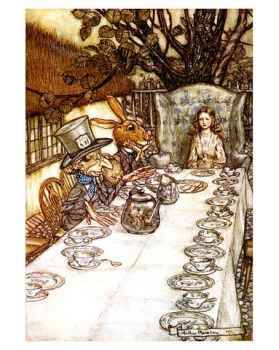Wow.
Just. Wow.
300 is based on a graphic novel, written by Frank Miller, who also wrote Skin City. 300 is a highly stylized account of the Battle of Thermopylae between the Greeks and the Persians in 480 B.C. The 300 Spartans and about 700 Thespians (remember Greece was a collection of independent city-states), led by King Leonidas of Sparta, hold back the Army of Xerxes I of Persia for three days. They were betrayed by a local resident who showed the Persians a back trail, allowing the Persian Army to surround Leonidas and the his men, but not before suffering huge losses.
The first part of the movie sets up the conflict. We learn how Spartan warriors are trained for combat from infancy. We learn of the test Leonidas had to pass as a teen before he could become king. We next see him training his own son, telling the boy that a warrior must use his head as well as his brain.
Xerxes, who has conquered most of Asia and considers himself a god, sends a messenger to Sparta. The messenger brings a string of skulls wearing crowns--the heads of the kings who have opposed Xerxes.
The Spartans are not impressed. Leonidas is not intimidated. There will be no negotiation, no surrender. If Xerxes wants to conquer Greece, he'll have to come through Sparta.
There is treachery afoot, however, as not everyone agrees that fighting the entire Persian Army is the best thing to do. Leonidas knows his army will be outnumbered, so he uses the geography of Greece as well as the skill of his warriors. He is not allowed to take the entire Spartan Army, but only 300 volunteers--men who already have sons to carry on their family line--to the mountain pass. Leonidas bids his wife good-bye, who gives him the classic line, "Spartan! Return with your shield or on it!"
(Afterwards I told Hubs, who was a Marine, I knew where the Corps got its start.)
The Spartans meet up with the Acadians, who also have come to fight the Persians. There are more of them, but they are citizen-soldiers: potters, blacksmiths, poets. Leonidas knows that his Spartans are trained not just to fight, but to fight as a unit, protecting their comrades as well as themselves.
The battle begins and the Spartans and Acadians make a valiant stand. The filming of the slaughter is almost poetic, in a Crouching Tiger, Hidden Dragon kind of way. This type of war, this type of fighting is personal, face to face, man to man for the most part.
But the Spartans and the Acadians know what they are fighting as and what they are fighting for. They are fighting as free men and they are fighting to keep their sons, their daughters, their wives, their elders free as well. (No mention is made that the Spartans themselves enslaved those they defeated in battle.) They fight with real weapons against myth and trickery. They are fighting for their civilization against those who are forced to fight by the lash.
Back at home, there is treachery and treason afoot that the queen must deal with.
There is some controversy about this movie. The Iranians don't like it (which, frankly, made that a recommendation to go see it), claiming the movie distorts their history and their culture. I'm sure it does--it distorts the Spartan culture as well. (Somehow, I don't think their women were quite as outspoken as the queen was.) There is much talk about freedom and the price of freedom. There is glorification of the warrior culture. (I've got to admit there is something sexy about men who go out and do their duty without question or hesitation, knowing they will die. The six-pack abs, the "Speedos", and the swirling crimson capes didn't hurt either. I wonder if there's something hardwired into the female brain that makes us respond viscerally to a man in uniform. Any uniform!) You can see this movie as a wake-up call to Western Civilization that we face annihilation from a madman from the East and we'd better make a stand. Or you can see the U.S. as Persia, unable to defeat a band of dedicated partisans despite superior numbers of men and materiel.
Or you can sit back and enjoy the spectacle.
My kids have all seen it, even DD#2. They've all enjoyed it and thought it was a great movie. The movie's origins as a graphic novel are especially pronounced at the beginning. And the CGIs are awesome. The actors are excellent. There is some nudity and much violence, most of it stylized.
Unfortunately, it seems that the only way our children are going to hear about any of the history of the beginnings of Western Civilization is through movies like this one and like last year's Troy. (300 is much better, by the way.) Stories like these transmit not only history but values, the values that this country was based on. ("Give me liberty or give me death!") What stories are we telling our children that illustrate our values? What are our culture's common myths?
We used to have them. I'm not so sure we do anymore.
I worry about the holes in the education of my children and whether it's too late to fill them. And how can I fill them. What stories have I neglected to tell them that they will need as adults?
Scary thoughts to have after watching what's supposed to be a "popcorn movie!"
On the March Hare scale: 4 out of 5 Golden Tickets. 4.5 if you can appreciate the stylized violence.
Sunday, April 15, 2007
Movie Review: 300
Posted by
March Hare
at
7:12 AM
![]()
Labels: Movie Reviews
Subscribe to:
Comment Feed (RSS)




|